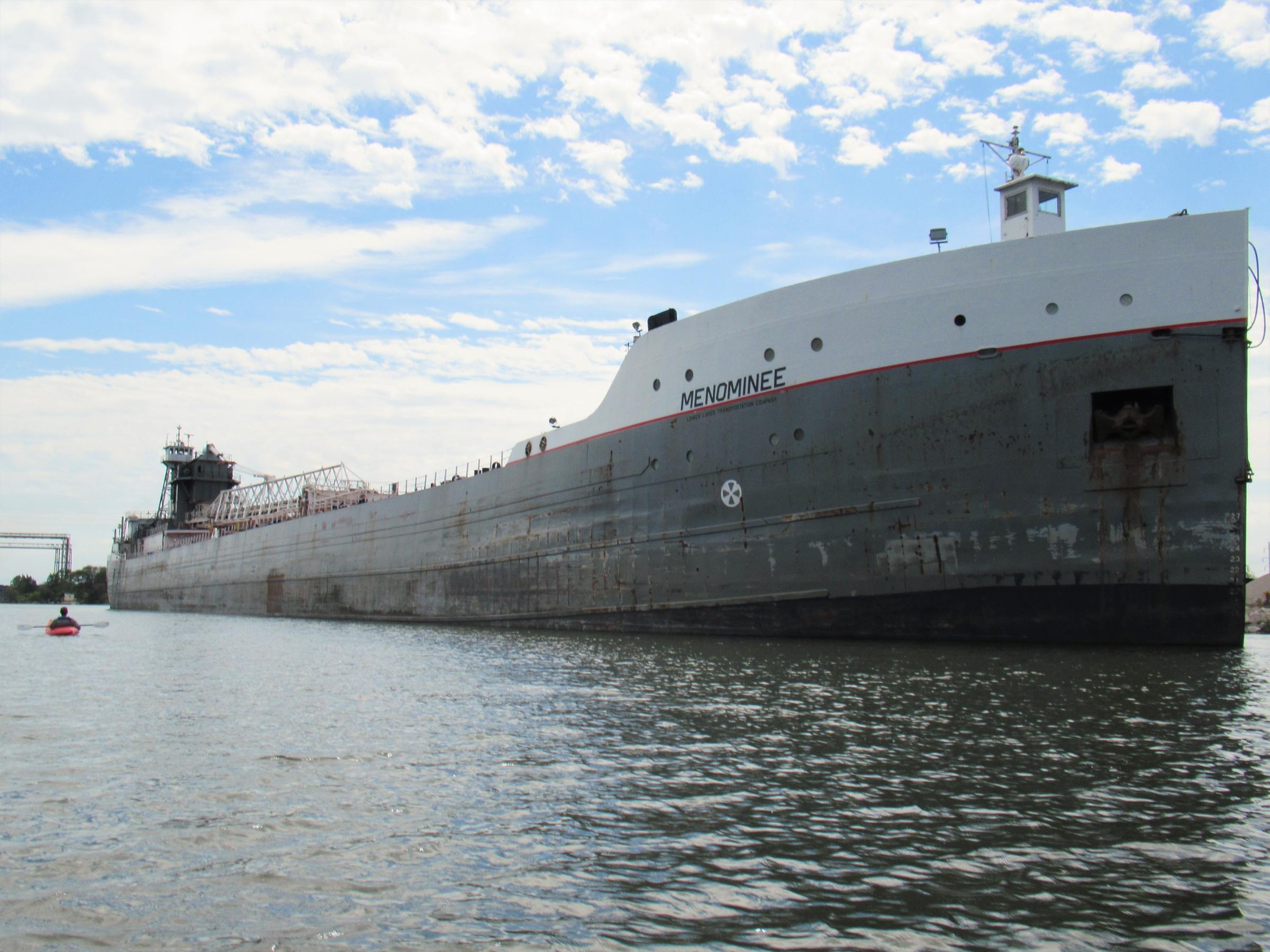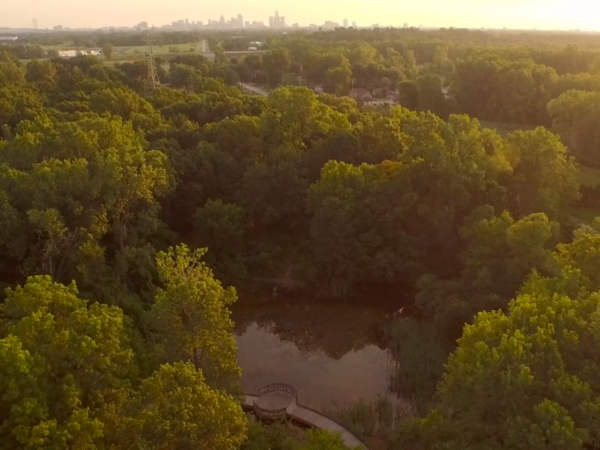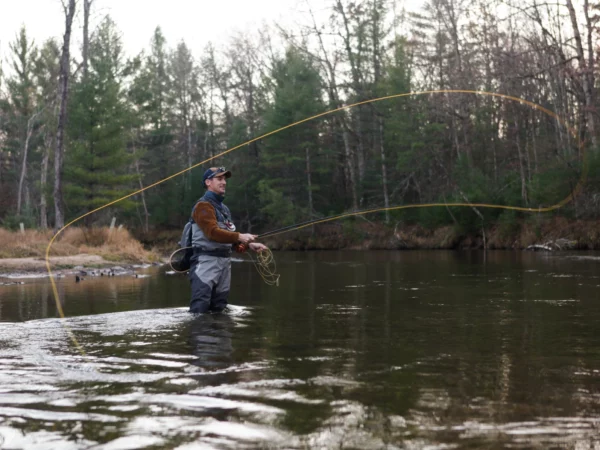
By Lester Graham, Michigan Radio
The Great Lakes News Collaborative includes Bridge Michigan; Circle of Blue; Great Lakes Now at Detroit Public Television; and Michigan Radio, Michigan’s NPR News Leader; who work together to bring audiences news and information about the impact of climate change, pollution, and aging infrastructure on the Great Lakes and drinking water. This independent journalism is supported by the Charles Stewart Mott Foundation. Find all the work HERE.
Canada is expanding its rules for ballast water in ships. The Canadian Minister of Transport outlined the new regulations intended to prevent the further spread of invasive species in Canada.
Ballast water helps keep ships level by pumping it in or out of the ship when loading and unloading. Doing that also can suck up invasive species such as quagga and zebra mussels and then spread them to the next port.
“The new ballast water regulations will limit the introduction and spread of these species by vessels while protecting Canada’s biodiversity,” said Omar Alghabra, Minister of Transport, according to a release.
The rules require all Canadian ships and all ships visiting Canadian ports to treat ballast water. That includes so-called “lakers.” They are ships which only haul cargo within the Great Lakes.
U.S. Environmental Protection Agency ballast rules exempt “lakers” from treating ballast water, only requiring ocean-going vessels to manage ballast water.
“We’re excited to see that Canada has decided to regulate “lakers” (which) can move invasive species from lake to lake,” said Molly Flanagan with the environmental group Alliance for the Great Lakes.
Canadian officials say the move will cut the spread of invasive species in Canadian ports by an estimated 82% by 2030.
“I think Canada is really looking at what is needed in order to protect the Great Lakes and I hope that EPA is going to follow suit,” Flanagan said.
Canadian officials concede it’s a cost to the shipping companies, but note the total cost to upgrade ships is estimated to be about $227 million (U.S) and will save about $800 million in invasive species damage to fishing, infrastructure, and the environment in Canada.
Catch more news on Great Lakes Now:
Great Lakes freighters may have to treat ballast water
Early Detection: When it comes to Great Lakes invasives, prevention is the only cure
Least Wanted: Potential Great Lakes invasive species are little known but still a big problem
API key not valid. Please pass a valid API key.Featured image: One of the lakers, bulk cargo ships that travel only within the Great Lakes system.
(Photo Credit: Lester Graham/Michigan Radio)
1 Comment
-
President Obama before leaving office amended the invasive species act by executive order to include consideration of human health when addressing invasive species especially if it pertains to global warming.. With global warming melting sea ice releasing and exasperating the dangers of new viruses as well as old forgotten virus the threat of ballast water acting as a vector to disperse is very real as new shipping lanes open in the Arctic.
In 2020 the EPA published purposed regulations to satisfy bipartisan legislation signed into law By President Trump in 2018. Unfortunately the purposed regulations crafted by the EPA to satisfy this bipartisan regulation used achievable cost to industry as the primary reason for not taking any meaningful actions to address ships using the Great Lakes from worrying about ballast water. Just about everything, onboard treatment, land disposal, even simple filters were deemed not worth a value because of achievable cost. Unfortunately these bipartisan sanctioned regulations were even crafted to eliminate common sense best management practices (bmp) listed below.“EPA proposes not to continue the requirement that vessel operators must minimize or avoid uptake of ballast water in the following areas and situations:
* Areas known to have infestations or populations of harmful organisms and pathogens (e.g., toxic algal blooms);
* Areas near sewage outfalls;
* Areas near dredging operations;
* Areas where tidal flushing is known to be poor or times when a tidal stream is known to be turbid;
* In darkness, when bottom-dwelling organisms may rise in the water column
* Where propellers may stir up the sediment; and
* Areas with pods of whales, convergence zones, and boundaries of major currents.
The proposed deletion is based on the finding that such measures are not practical to implement. These conditions are usually beyond the control of the vessel operator during the uptake and discharge of ballast water and thus it is not an available measure or practice to minimize”
This bipartisan legislation disregarding President Obama’s executive order is sadly a stain to the importance of his legacy to try an implement change. In early 2021 many articles expressed hope that President Biden would champion change for the Great Lakes, nothing has yet to be reported. Of course it should be noted main stream media appears to ignore this problem. Why in a day an age where SARS, Covid are believed to be in the aquatic environment has the administration not yet acted to try and save our waters from future virus and pathogens. Trillions for infrastructure and social programs giving money away and pennies to protect our countries water for future generations. Oh I forgot 5 million for more study to a college.
Sincerely Don Mitchel




